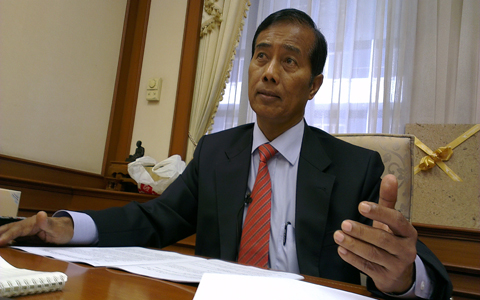Philippine lesson for Thailand’s deep South?

A framework peace agreement reached early October between the Philippine government and the country’s largest Muslim rebel group, the Moro Islamic Liberation Front (MILF) can serve a lesson for Thailand which is facing a bloody insurgency waged by Islamic militant groups.
Brokered by Malaysia, the latest agreement follows long negotiations with the MILF to end a 40-year conflict that has cost more than 120,000 lives. It provides for a new autonomous region in the south where the Muslims are the majority in a mainly Catholic country.
The agreement is expected to be officially singed on October 15 in Manila.
Thai security experts however maintain that the peace agreement model in the Philippines cannot be applied to the conflict in Thailand’s three southernmost provinces because of the different root causes and, more importantly, the militant groups in southern Thailand have not been represented by any organization which may make possible any negotiation with the Thai government.
However, they believe that the Philippine experience and lesson could be useful to Thailand if, in the future, there is to be peace negotiations between the Thai government and the Muslim militants.
Democrat party’s deputy leader Thavorn Senniam had an opportunity to visit Mindanao, the hotbed of Muslim insurgency in the Philipines, for a study tour sponsored by Asia Foundation and the World Bank, in August.
Upon his return to Thailand from the visit, Mr Thavorn wrote a report about the history of Muslim rebellion. Borrowing the Philippine experience, he also made some suggestions about Thailand’s insurgency problem in the restive deep South.
According to Thavorn’s report, the Muslim Moro rebellion for self-determination is divided into three periods: the rebellion against the Spanish colonists during 1521-1898; the rebellion against the American colonists during 1898-1946 and the rebellion against the Philippine government from 1970 until today.
The modern day’s rebellion which began in 1970 was rooted in then Philippine government’s plan to assimilate the Moro Muslims in Luzon and Visayas by sending a large number of Christians to the two islands. Instead, the plan backfired and caused more conflicts with the Muslims prompting the Moro National Liberation Front (MNLF) to wage a secessionlist war against the central government.
In 1976, the first peace agreement was brokered by Libya. The Tripoli Agreement provided for self-rule in 13 provinces in Mindanao. However, the agreement eventually collapsed as the Marcos government refused to follow the agreement.
Negotiations were revived during the presidency of Corazon Aquino and Fidel Ramos with the MNLF resulting to the confirmation of Tripoli Agreement and the Autonomous Region of Muslim Mindanao. Conflicting opinion within MNLF led to the establishment of a breakaway faction called Moro Islamic Liberation Front.

In 2000, President Joseph Astrada ordered a crackdown of the MILF prompting the rebel leaders to call for a jihad against the central government. Three years later, President Aroyo asked Malaysia to broker peace talks with the MILF. A peace agreement was reached and provided for an autonomous regon in Mindanao. However this was nullified by the Supreme Court as unconstitutional because the agreement was done without public participation.
Peace talks were revived by President Benigno Aquino after he assumed the presidency in 2010 with Malaysia’s help. And the result was the recent framework peace agreement reached by the two sides.
According to Thavorn, there are similarities between the conflicts in the Philippines and in southern Thailand:
1.The conflicts were caused by the sense of injustice among the Muslims towards the central government, the ethnic difference, unemployment and educational problems and development problems.
2.The use of force to suppression the rebellion tends to escalate the conflict.
3.Lack of continuity of clear policy from the central government.
4.central government’s ignorance of development in Muslim-predominant Mindanao and southern Thailand.
----------------------------------------------------------------------------------------------------------
Captions :
1 Map of Phillipines
2 Mr Thavorn Senniam
